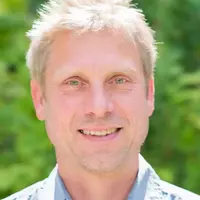Inclusive Excellence meets Evidence-Based Instructional Practice: The case of a three-pronged approach towards changing institutional practice
 Martin Storksdieck, Oregon State University
Martin Storksdieck, Oregon State University
 Ann Sitomer, Oregon State University
Ann Sitomer, Oregon State University
 Julie Risien, Oregon State University
Julie Risien, Oregon State University
 Holly Cho, Oregon State University
Holly Cho, Oregon State University
 Mary Beisiegel, Oregon State University
Mary Beisiegel, Oregon State University
 Lori Kayes, Oregon State University
Lori Kayes, Oregon State University
 Devon Quick, Oregon State University
Devon Quick, Oregon State University
 Nana Osei-Kofi, Oregon State University
Nana Osei-Kofi, Oregon State University
Our interactive presentation describes a project based on the premise that evidence-based instructional practices alone are not sufficient for addressing inequities that result in students succeeding in, or leaving postsecondary STEM. We realized that additional practices and an instructor's stance toward social justice are necessary to create a stronger sense of belonging and fewer instances of exclusion in STEM. We identified curriculum design, teaching practices and making social justice explicit as strategies that increase students' sense of belonging, success, and persistence in STEM. This work is part of HHMI's Inclusive Excellence initiative.
We identified mechanisms for first- and second-order change. First-order change included (1) targeting 5 cohorts of about 20 instructors of science from our university and two nearby community colleges ("Fellows"); (2) crafting an initial workshop (one week in-person in year 1, and 24 hours online in year 2); and (3) designing cohort-based support and community-building activities that help our Fellows implement / experiment with their designed action plans. The action plans are how Fellows translate workshop-based learnings into instructional practice.
Second-order change is based on three elements: (1) an evolving community of Fellows experienced and successful in this work, using measures of student belonging for ongoing improvement, as well as training to become advocates and change agents in spheres of influence; (2) early embedding of the project into the Office of Undergraduate Education and the Center for Teaching and Learning at OSU; and (3) close collaboration and acknowledgement of other existing structures, institutions and people at OSU, who work towards similar goals of social justice, equity and student belonging and success.
Post-workshop data on the second cohort of fellows illustrates some of the challenges facing the team, and some of future opportunities. Reflections of progress towards structural embeddedness in university and community college contexts will complement the talk.
- Department-level change
- Institutional-level change
- Two-Year Colleges
- Research-Focused Universities
- Connecting Change Theory and Practice
- Evaluating and/or Measuring Change
- Promoting Access, Equity and Inclusion
- Role of Centers/Faculty Development in Promoting Institutional Change
- Engaging multiple stakeholders in the change process
- Scaling and Sustaining Change
